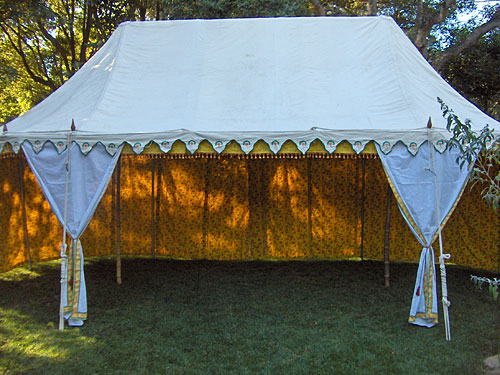Vital Tips for Establishing and Preserving Outdoor Camping Tents
Setting up and maintaining an outdoor camping tent requires even more than simply a basic understanding of outdoor equipment; it requires focus to detail and insight. From choosing the proper campsite to mastering the complexities of tent throwing, each action is critical to ensure a comfortable and secure outdoor experience.
Choosing the Right Campground
Selecting an ideal camping site is vital for making sure a pleasurable and risk-free camping experience. Begin by looking for degree ground, which provides a secure and comfortable sleeping area.

Access is another essential factor. Select a site that is conveniently obtainable yet not extremely revealed to foot website traffic to preserve personal privacy. Finally, adhere to Leave No Trace concepts by utilizing designated camping sites whenever feasible, valuing the all-natural environment, and ensuring your camping site choice has very little eco-friendly influence. By diligently evaluating these elements, you can improve both the security and pleasure of your outdoor camping adventure.
Necessary Outdoor Tents Arrangement Equipment

First and foremost, a trusted tent mallet or hammer is vital for driving risks right into various ground types. Select a light-weight, durable mallet to ease the effort required for securing your tent. Tent stakes are an additional critical element; bring additional risks past what includes your tent to account for different dirt problems and unanticipated requirements.
A ground tarpaulin or footprint is necessary for safeguarding the camping tent floor from abrasions and moisture, prolonging the life of your camping tent. Furthermore, lugging a set of extra guylines and tensioners guarantees you can adequately protect your camping tent, particularly in gusty conditions.
Finally, a multi-tool or a set of standard tools including pliers, scissors, and a blade can be very useful for managing unpredicted changes or fixings. Ensuring you have these necessary camping tent setup devices will certainly lead the way for a delightful and trouble-free outdoor camping experience.
Mastering Camping Tent Pitching
Grasping the art of tent pitching is an essential skill that can substantially enhance your camping experience. A well-pitched camping tent supplies not just comfort however additionally safety and security and security, ensuring that you are well-protected from the aspects and any unforeseen disturbances.
Begin by picking a suitable website: level terrain without rocks, roots, and various other obstructions. Clear the ground of debris to create a smooth surface area for your outdoor tents. Lay out your camping tent footprint or tarpaulin to give an extra layer of defense versus wetness and abrasions.
Assemble the tent poles according to the maker's guidelines, ensuring that each pole is fully extended and safely attached - stretch tent useful link hire. Connect the poles to the camping tent body, either by placing them into sleeves or clipping them onto hooks, depending upon your outdoor tents's layout. Meticulously raise the tent, seeing to it that it stands tight and uniformly well balanced
Bet down the edges of the outdoor tents, drawing each edge limited to get rid of slack. By following these actions meticulously, you can attain a comfy and safe and secure configuration for your outdoor camping adventure.
Weatherproofing Your Camping Tent
When faced with uncertain weather conditions, how can you ensure your camping tent remains a reputable shelter? Begin by picking a tent with a robust rainfly that expands well over the sides and gets to close to the ground.
Next, think about the camping tent's material. Fabrics like polyester and nylon are liked for their water-resistant properties, however they must be treated with a resilient water repellent (DWR) layer. Routinely reapply the DWR to maintain its efficiency. Additionally, a ground tarp or impact he has a good point underneath your outdoor tents is essential. It provides an additional layer of defense against wetness seeping up from the ground.
Ensure your camping tent has sufficient vents and keep them open whenever feasible, also throughout rain. Always pitch your camping tent on greater ground, avoiding anxieties where water can merge.
Long-Term Outdoor Tents Maintenance
Making sure the long life of your camping tent requires regular and precise maintenance. Begin by completely cleaning your camping tent after each use.
Dry your outdoor tents entirely prior to storage space to stop mold and mold. Set it up in a well-ventilated area or hang it up until every part is completely dry. Store your camping tent loosely in a cool, dry area far from straight sunshine. Prevent compressing it tightly for lengthy periods, as this can degrade the material and water resistant finishings.

Verdict
Selecting an appropriate camping area, utilizing necessary setup devices, and mastering the pitching procedure are essential for a reliable outdoor camping experience. In addition, weatherproofing the outdoor tents and sticking to long-lasting upkeep techniques, such as cleaning, drying out, and evaluating for damage, ensure long life and functionality. Embracing these methods not just enhances comfort and safety and security throughout camping yet likewise adds to the conservation of the tent, enabling continued enjoyment of exterior experiences.
From picking the appropriate camping area to grasping the intricacies of tent throwing, each step is important to ensure a comfy and secure outdoor experience. While being close to a stream or lake is hassle-free, ensure you pitch your outdoor tents at the very least 200 feet away to minimize the threat of flooding and contamination. Camping tent risks are one more essential component; bring additional risks past what comes with your camping tent to account for varied dirt conditions and unexpected requirements.
Attach the posts to the camping tent body, either by putting them right into sleeves or clipping them onto hooks, depending on your outdoor tents's click here for more info design. Furthermore, weatherproofing the outdoor tents and sticking to long-term upkeep techniques, such as cleansing, drying out, and checking for damage, make sure long life and performance.